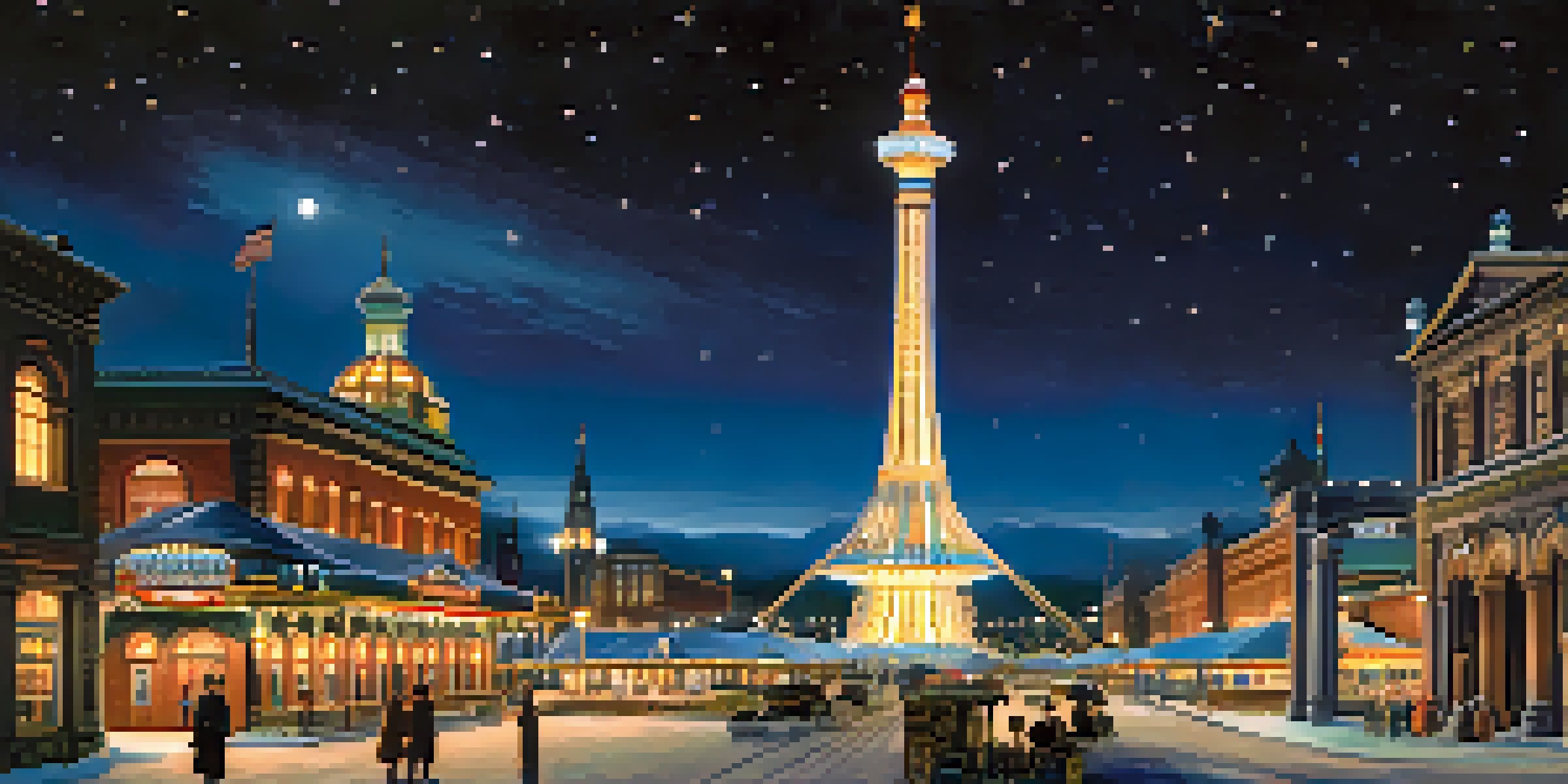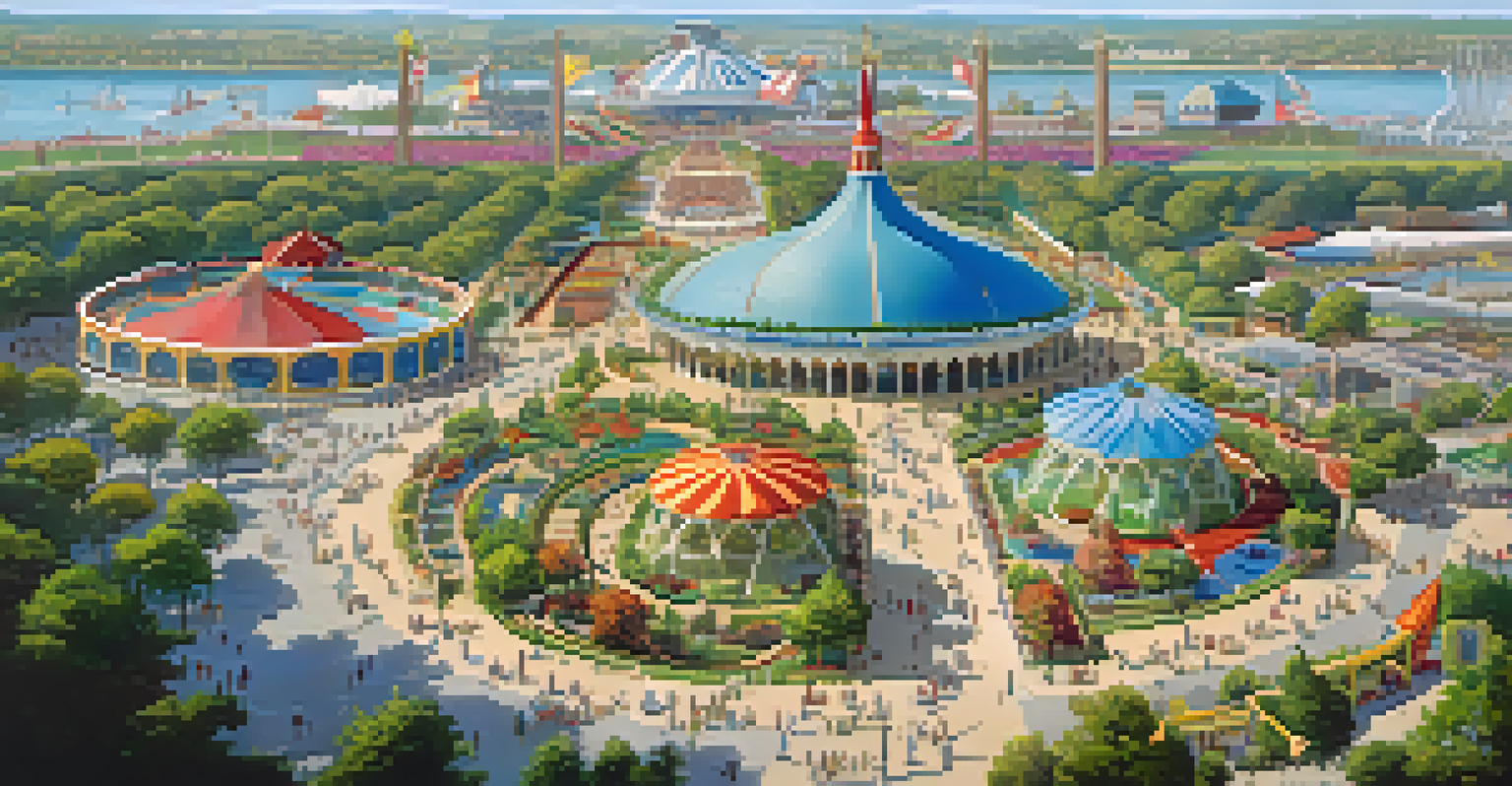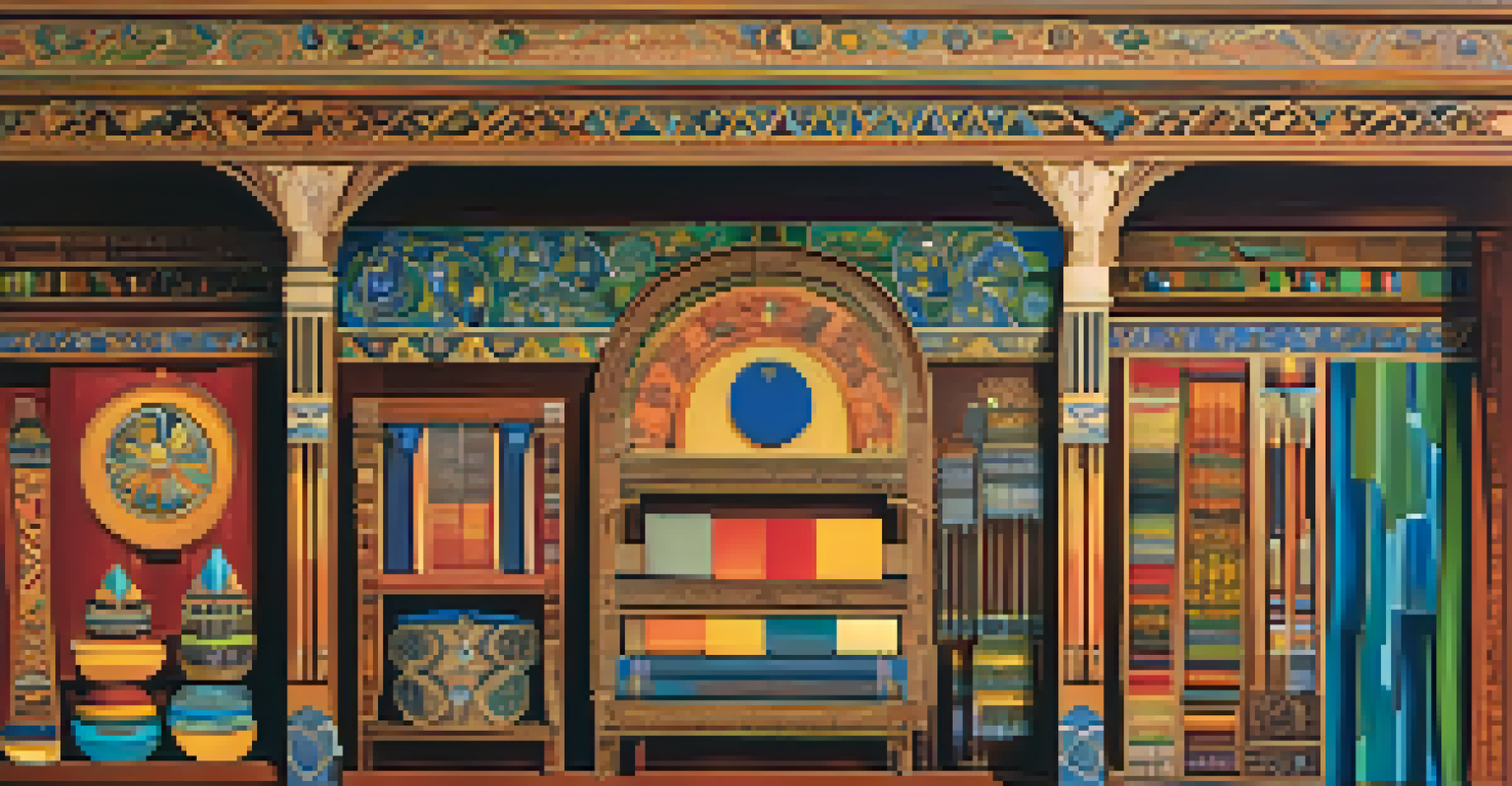The Pan-American Exposition: Buffalo's Cultural Showcase

The Historical Context of the Pan-American Exposition
The Pan-American Exposition took place in Buffalo, New York, from May to November 1901, showcasing the progress and achievements of the Americas. This event emerged during a time of rapid industrialization and technological innovation, following the 1893 World's Fair in Chicago. Buffalo, as a key transportation hub, was eager to position itself as a center of culture and commerce.
The role of art is to make a world that is more beautiful and meaningful for everyone.
The exposition served as a platform to promote peace and cooperation among the countries of the Americas, emphasizing shared values and mutual interests. With the recent completion of the Pan-American Railway, there was a strong incentive to highlight the interconnectedness of the continent. This exposition was not just a display of goods but a celebration of unity and progress.
Attended by millions, the Pan-American Exposition became a pivotal moment in Buffalo's history, marking its transformation into a thriving urban center. The event also showcased the era's architectural styles, with buildings constructed in a neoclassical design. This blend of culture and commerce left a lasting impact on the city and its residents.
Architectural Marvels of the Exposition
One of the most striking features of the Pan-American Exposition was its stunning architecture. The event featured over 150 buildings, many designed by renowned architects of the time, creating an impressive landscape. The Electric Tower, a symbol of progress, illuminated the fairgrounds and dazzled visitors with its thousands of electric lights.

The use of the Beaux-Arts architectural style was prevalent, characterized by grand façades and elaborate ornamentation. Structures like the Temple of Music and the Agriculture Building not only showcased architectural beauty but also housed exhibitions that highlighted technological advancements in their respective fields. Each building told a story of innovation, culture, and artistry.
Cultural Unity at the Exposition
The Pan-American Exposition showcased diverse cultural exhibits, fostering camaraderie and international cooperation among participating nations.
As visitors wandered through the fairgrounds, they were treated to a visual feast that reflected the optimism of the age. The design and layout of the exposition were intentionally crafted to create a sense of wonder and awe, encouraging exploration and interaction. This architectural grandeur became a hallmark of Buffalo's identity for years to come.
Cultural Exhibits and International Participation
The Pan-American Exposition featured a diverse array of cultural exhibits, showcasing the rich heritage of participating countries. Nations from across the Americas set up pavilions that highlighted their unique customs, arts, and industries. This celebration of diversity fostered a sense of camaraderie among attendees and participants alike.
Innovation distinguishes between a leader and a follower.
Visitors were treated to performances, art displays, and culinary delights from various cultures, creating an immersive experience. For instance, the Mexican Pavilion showcased traditional music and dance, while the Argentinean exhibit highlighted its agricultural advancements. These cultural showcases not only educated attendees but also created lasting connections between nations.
The emphasis on international cooperation was evident in the planning and execution of the exposition. By inviting countries to share their culture and innovations, the event promoted dialogue and mutual respect. This spirit of collaboration resonated with visitors and left a legacy of goodwill that extended beyond the fair's duration.
Technological Innovations on Display
The exposition was a showcase for the technological advancements of the early 20th century. Innovations such as the electric streetcar, the telephone, and even the first motion picture were featured, demonstrating the rapid pace of progress. Attendees were fascinated by the possibilities these technologies presented for the future.
One of the most exciting attractions was the demonstration of Nikola Tesla's alternating current system, which powered the exposition. This groundbreaking technology not only illuminated the fairgrounds but also transformed the way electricity was used in homes and businesses. Such innovations highlighted the importance of science and engineering in everyday life.
Architectural Grandeur on Display
The event featured over 150 buildings designed in the Beaux-Arts style, creating a visually stunning landscape that reflected the optimism of the era.
The Pan-American Exposition provided a glimpse into a future where technology would play a central role in society. By showcasing these advancements, the exposition inspired future generations to embrace innovation and drive progress. It served as a reminder of how far humanity had come and how much further it could go.
The Role of Arts and Crafts at the Exposition
Art played a significant role at the Pan-American Exposition, with numerous galleries and exhibitions highlighting various artistic movements. The event featured works from both established and emerging artists, showcasing the richness of cultural expression across the Americas. This focus on the arts fostered an appreciation for creativity and beauty.
Notably, the exposition included a prominent display of the Arts and Crafts movement, emphasizing handcrafted goods and traditional techniques. Visitors were drawn to the intricate designs and quality materials that represented a departure from mass production. This celebration of craftsmanship resonated deeply with audiences, sparking interest in artisan goods.
Through its dedication to the arts, the exposition provided a platform for dialogue about the role of creativity in society. It encouraged attendees to reflect on the relationship between art and culture, and how both can influence and inspire. The legacy of this artistic celebration continues to be felt in Buffalo's vibrant cultural scene today.
Legacy and Impact of the Pan-American Exposition
The Pan-American Exposition left an indelible mark on Buffalo and the wider region. Its influence can still be seen in the city's architecture, cultural institutions, and community pride. The fair fostered a sense of identity for Buffalo, positioning it as a key player in the American landscape.
The event also had a lasting impact on international relations and cooperation among the Americas. By promoting cultural exchange and technological advancement, it laid the groundwork for future collaborations. The spirit of unity fostered at the exposition continues to inspire initiatives aimed at enhancing relationships between countries.
Technological Innovations Highlighted
Innovations like the electric streetcar and Nikola Tesla's alternating current system were showcased, illustrating the rapid advancements of the early 20th century.
In retrospect, the Pan-American Exposition served as a celebration of progress, culture, and collaboration. Its legacy endures not only in Buffalo's history but also in the hearts and minds of those who believe in the power of connection. The lessons learned from this grand event remind us of the importance of celebrating diversity and innovation.
Commemoration and Modern-Day Relevance
Today, the legacy of the Pan-American Exposition is commemorated through various events and initiatives in Buffalo. Museums and cultural institutions often host exhibitions that reflect on the fair's achievements and its impact on the city. These celebrations allow new generations to appreciate the rich history and cultural significance of the exposition.
Modern-day Buffalo continues to embrace its identity as a cultural hub, drawing inspiration from the collaborative spirit of the exposition. Local festivals, art shows, and community events echo the essence of the fair, showcasing the talents and diversity of the region. This commitment to cultural celebration fosters a sense of belonging and pride among residents.

As we reflect on the past, the lessons learned from the Pan-American Exposition remain relevant today. In an increasingly interconnected world, the values of cooperation, innovation, and cultural exchange continue to resonate. Embracing these ideals can help shape a brighter future for Buffalo and beyond.